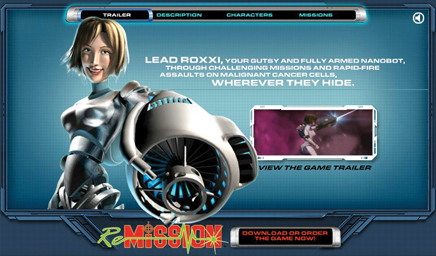Click here to see all of the stories from the 2012 Interactive Guide
Applying game dynamics to non-game environments creates opportunities to engage people and exert behavioral changes with unprecedented success. James Chase reports
Last September, teams of online gamers took just three weeks to decipher the molecular structure of a key protein that had been baffling biochemists for more than a decade. Scientists believe the discovery might help in the development of new AIDS drugs, which is exciting enough. But the fact that the gamers solved this complex puzzle so quickly, armed with little more than a scoring system and a leader board, has far-reaching possibilities of its own.
By the time the average American turns 21, they will have spent more than 10,000 hours playing games. The fact is, humans are good at games; we respond very well to game dynamics. We thrive on rules, points, challenges, rewards and leaderboards.
“In the game world, we become the best versions of ourselves,” game designer Jane McGonigal told delegates at the TED conference in 2010. “My goal is to make it as easy to save the world in real life as it is in online games.”
McGonigal, who has spent several years researching game dynamics, categorizes the extraordinary traits gamers display: they become “blissfully productive” (a willingness to work relentlessly hard); they display “urgent optimism” (a readiness to solve problems immediately, and a belief that they can succeed); they develop the ability to “weave a tight social fabric” (humans like other humans more if they’ve played a game together); and they have a desire for “epic meaning” (they want to change the world, and believe that they can do that).

Gaming has the potential to be a powerful platform for change. The idea is that by taking game mechanics and applying them to non-gaming situations—known as “gamification”—we have a much greater chance of changing people’s behavior. And healthcare is ripe with possibilities, from managing and preventing conditions like obesity and diabetes, to educating and raising awareness about diseases, to encouraging adherence to treatment regimens.
“When we think about adherence, we think of it as a reach and frequency issue,” noted Joe Shields, global strategic marketing at Lifescan, at the MM&M Virtual Summit 2011. “But gamification could have a major impact.”
Fabio Gratton, chief innovation officer at Ignite Health, believes there is a huge opportunity to captivate the hoards of people who regularly tune out of traditional messages. “A large majority of messages related to health and healthcare are tedious, dense, confusing and boring,” he told healthin30.com recently. “While our understanding of diseases has evolved exponentially—and with that, the scientific breakthroughs to address them—our ability as a society to engage with those who need the science to live longer has not kept up.”
Many companies are experimenting and there are plenty of games out there already, such as: Humana Games for Health, a suite of online games designed to “keep your mind and body fit”; Re-Mission, for adolescents and young adults cancer; Zamzee, a physical activity rewards system for kids; and Lit to Quit, an iPhone game for smoking cessation. And if studies continue to produce evidence of that gamification works, there will be many more to come.
From the February 03, 2012 Issue of MM+M - Medical Marketing and Media







